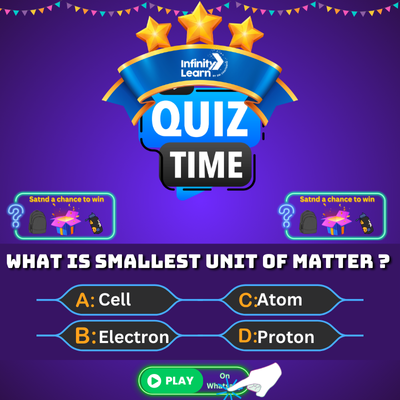Table of Contents
Question Tags: Have you ever said something and added a little question at the end, like “It’s a sunny day, isn’t it?” That’s called a question tag! Question tags are short questions added to the end of a sentence to confirm or check information. They make conversations sound friendly and natural. Learning how to use question tags correctly helps improve your English grammar and makes everyday speaking easier and more polite. In this topic, you’ll explore the definition, rules, and examples of question tags to make your English sound smooth and confident!
What is Question Tag?
A question tag is a short question added to the end of a sentence. It is used to confirm information, ask for agreement, or start a friendly conversation. Question tags turn a statement into a question, usually when you expect the listener to agree or respond.
Structure:
Positive statement ➡️ Negative tag
Negative statement ➡️ Positive tag
Examples of Question Tags:
- It’s a beautiful day, isn’t it?
- She can swim very well, can’t she?
- You don’t like spicy food, do you?
- They are coming to the party, aren’t they?
Question Tags Rules
Question tags follow a few easy rules to help you form the correct ending for your sentence. These tags make a statement sound like a question and are used to confirm or check information during conversations.
Rule 1: Positive Statement — Negative Tag
When the main sentence is positive, the question tag must be negative.
Example:
- She is your best friend, isn’t she?
- You like pizza, don’t you?
Rule 2: Negative Statement — Positive Tag
When the sentence is negative, the question tag must be positive.
Example:
- He doesn’t play cricket, does he?
- They aren’t at school, are they?
Rule 3: Helping Verb is Used in the Tag
The auxiliary or helping verb from the sentence is repeated in the tag.
Example:
- You have finished the project, haven’t you?
- She can speak English, can’t she?
Rule 4: If No Helping Verb, Use ‘do’, ‘does’, or ‘did’
If the sentence doesn’t have a helping verb, use do / does / did in the tag.
Example:
- He plays football, doesn’t he?
- They visited Paris, didn’t they?
Rule 5: Subject Becomes a Pronoun in the Tag
The subject of the sentence must be replaced with its matching pronoun in the question tag.
Example:
- Riya is a good singer, isn’t she?
- The boys are playing, aren’t they?
Rule 6: Intonation Depends on the Intention
- If you are sure about something, use falling tone at the end.
- If you are unsure or asking a real question, use rising tone.
Rule 7: ‘Let’s’ Sentences Use ‘Shall We?’
When a sentence starts with Let’s, the tag is always shall we?
Example:
Let’s go for a walk, shall we?
Rule 8: ‘I am’ Sentences Use ‘Aren’t I?’
Although the subject is I am, the correct question tag is aren’t I? (not amn’t I).
Example:
I am your friend, aren’t I?
Forming and Using Question Tags in Sentences
Question tags are short questions added at the end of a statement to confirm information, invite agreement, or start a conversation. They make sentences more interactive and polite, especially in spoken English.
How to Form Question Tags:
1. Check the sentence type — is it positive or negative?
- If the statement is positive, the tag should be negative.
- If the statement is negative, the tag should be positive.
2. Use the helping verb from the sentence.
- If there’s already an auxiliary (is, are, can, have, does), use the same one in the tag.
- If no helping verb is present, use do, does, or did.
3. The subject in the tag must be a pronoun — like he, she, it, they, we, you, I.
Examples of Using Question Tags:
- She is going to school, isn’t she?
- You don’t like coffee, do you?
- They have finished their homework, haven’t they?
- He plays guitar, doesn’t he?
- I am right, aren’t I?
Verbs and Their Corresponding Question Tags
When forming question tags, the verb used in the main sentence plays a big role. If the sentence has an auxiliary verb (like is, are, have, do, can, will), that same verb is repeated in the question tag — just in the opposite form (positive or negative).
Examples:
- She is studying, isn’t she?
- They have finished dinner, haven’t they?
- He can drive, can’t he?
- You don’t like milk, do you?
If the sentence doesn’t have a helping verb, the question tag uses do, does, or did based on the tense.
Examples of Sentences with Question Tags
Here are some clear and useful examples of question tags in sentences:
- The sun is shining, isn’t it?
- She loves reading books, doesn’t she?
- They aren’t ready, are they?
- You were at the park, weren’t you?
- He won the match, didn’t he?
These examples show how question tags help turn normal statements into friendly questions for confirmation or agreement.
Positive Statements with Negative Question Tags
When a sentence is positive (stating something is true), the question tag should be negative. This is one of the most common patterns in English grammar.
Examples:
- You are coming to the party, aren’t you?
- She can sing very well, can’t she?
- They will join us later, won’t they?
- He has finished the work, hasn’t he?
This form is used to confirm something you believe to be true.
Negative Statements with Positive Question Tags
When a sentence is negative (usually contains “not” or a negative helping verb), the question tag must be positive. This helps check or confirm if the statement is correct.
Examples:
- She isn’t at home, is she?
- They don’t eat junk food, do they?
- He hasn’t finished yet, has he?
- You can’t drive a car, can you?
This structure is polite and often used in both conversations and writing.
Question Tags Exercises – Advanced Level
Instructions: Complete each sentence by adding the correct question tag.
- The meeting has been postponed, __________?
- Nobody believed his strange story, __________?
- Let’s have a quick break, __________?
- You hardly study for your tests, __________?
- The children had never visited the museum before, __________?
- Your sister can’t solve this puzzle alone, __________?
- There was little hope of success, __________?
- I am part of the team, __________?
- The movie wasn’t very interesting, __________?
- She seldom goes to the gym these days, __________?
- The manager approved your leave request, __________?
- They should have informed you earlier, __________?
- It rarely snows in this city, __________?
- Someone knocked at the door, __________?
- Everything went as planned, __________?
Answer Key
- The meeting has been postponed, hasn’t it?
- Nobody believed his strange story, did they?
- Let’s have a quick break, shall we?
- You hardly study for your tests, do you?
- The children had never visited the museum before, had they?
- Your sister can’t solve this puzzle alone, can she?
- There was little hope of success, was there?
- I am part of the team, aren’t I?
- The movie wasn’t very interesting, was it?
- She seldom goes to the gym these days, does she?
- The manager approved your leave request, didn’t he?
- They should have informed you earlier, shouldn’t they?
- It rarely snows in this city, does it?
- Someone knocked at the door, didn’t they?
- Everything went as planned, didn’t it?
Summary
Question tags depend on the verb form in the sentence. Positive sentences get negative tags, and negative sentences get positive tags. Learning this simple rule will make your English sound smooth, polite, and natural in conversations.
Question Tags FAQs
What is a question tag and example?
A question tag is a short question added at the end of a statement to confirm or check information. It turns a sentence into a polite question. Example: You are coming to the party, aren’t you? She can dance, can’t she?
What are the five rules of question tag?
Here are the five basic rules for question tags: If the sentence is positive, the tag must be negative. If the sentence is negative, the tag must be positive. Use the same auxiliary verb in the tag as in the sentence. If there’s no auxiliary verb, use do, does, or did. The subject in the tag is always a pronoun (he, she, it, etc.).
How to teach question tags?
The best way to teach question tags is through real-life examples and practice. Start with simple sentences, explain the positive-negative rule, and focus on matching the correct verb and subject. Use conversation drills, quizzes, and fun classroom games to make students more comfortable using question tags in daily speech.
How do you answer question tags with answers?
When someone asks a question tag, the reply is usually Yes or No with the matching verb. Example: It’s raining, isn’t it? Yes, it is. or No, it isn’t. If the statement is true, reply with Yes. If the statement is false, reply with No.
What is the short form of shall not?
The short form of shall not is shan’t. Example: I shan’t be late for the meeting.
What is the trick of question tags?
The simple trick for question tags is: Positive statement = Negative tag Negative statement = Positive tag And always match the helping verb and subject pronoun. Once you remember this, question tags become easy to use in both speaking and writing.








